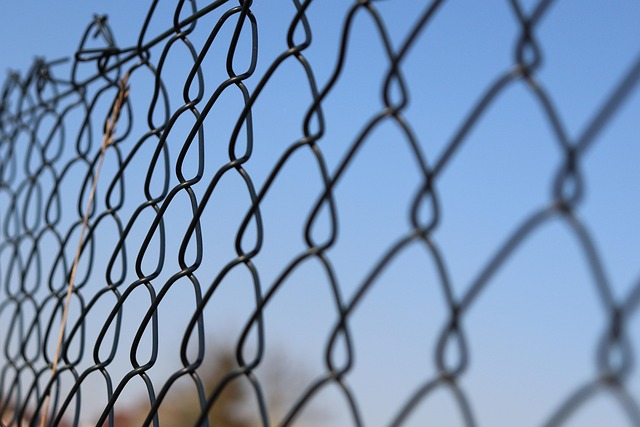Fencing is not just about functionality; it’s an art that enhances your outdoor space. When it comes to wooden fences, staining and sealing are essential practices for maintaining their beauty and longevity. This comprehensive guide delves into the intricacies of fence staining and sealing, offering valuable insights on choosing the right products, application techniques, and maintenance tips. By the end, you’ll be equipped with the knowledge to transform your wooden fence into a stunning focal point of your outdoor sanctuary.
- Understanding Fence Staining: Benefits and Types
- Preparing Your Wooden Fence for Staining
- Choosing the Right Stain: Color and Formula
- Application Techniques for Optimal Results
- Sealing Your Stained Fence: Protection and Durability
- Maintenance Tips to Keep Your Fence Looking New
Understanding Fence Staining: Benefits and Types
Fence staining is a process that involves applying a protective coat of pigment to your wooden fence, enhancing its appearance and prolonging its lifespan. It’s an essential maintenance task that offers numerous advantages. Firstly, it shields the wood from damaging elements like UV rays, rain, and snow, preventing fading, cracking, and rot. Regular staining can essentially act as a barrier, saving you money in the long run by delaying the need for costly repairs or full fence replacements.
There are various types of fence stain formulas available on the market, each designed to cater to specific needs. Some are water-based and environmentally friendly, while others are solvent-based for faster drying times. Solid colors offer a classic look, providing rich hues that can transform your fence into a striking feature. For a more natural appearance, semi-transparent stains allow the wood grain to show through, enhancing its beauty over time.
Preparing Your Wooden Fence for Staining
Before applying any stain or sealer, it’s crucial to prepare your wooden fence thoroughly. Start by cleaning the fence to remove any dirt, dust, or debris that might hinder the product’s adhesion. Use a pressure washer or a stiff brush and mild detergent for this step. Check the wood for any signs of rot, cracks, or damaged boards, and repair these issues before proceeding. Sanding the fence gently can help smooth out rough surfaces and ensure an even application of the stain. Remove any loose particles after sanding to create a clean canvas for your chosen treatment.
Choosing the Right Stain: Color and Formula
When it comes to enhancing your wooden fence with stain, selecting the perfect color is only half the battle won. The formula of the stain plays an equally significant role in achieving the desired effect. Opt for a semi-transparent or transparent stain if you want to preserve the natural wood grain and add a subtle boost of color. These stains allow light penetration, highlighting the wood’s natural beauty. On the other hand, solid or semi-solid stains offer complete coverage, transforming your fence into a canvas with vibrant, long-lasting colors. Consider factors like weather exposure, shade preferences, and the overall style of your outdoor space to choose a stain formula that aligns with your vision.
The color palette for fence stains is vast, ranging from earthy tones like browns and greens to bold options such as reds, blues, and even black. Choose a hue that complements your home’s exterior or creates a contrasting statement. Remember, lighter colors reflect light, making your fence appear larger and more inviting, while darker shades add depth and drama to your outdoor area.
Application Techniques for Optimal Results
When it comes to applying fence staining and sealing, technique is key. Start by cleaning the wood thoroughly to remove any dirt or debris, using a pressure washer if necessary. This ensures the stain adheres properly. Next, prepare your workspace by laying down drop cloths to protect surrounding areas from splatters.
For best results, use a brush with fine bristles for applying the stain evenly. Start at one end of the fence and work in small sections, ensuring even coverage. Allow the stain to dry according to the manufacturer’s instructions before sealing. Consider using a roller or sprayer for larger areas to achieve a more consistent finish.
Sealing Your Stained Fence: Protection and Durability
Sealing your stained fence is a crucial step in ensuring long-lasting protection and durability. Once you’ve invested time and effort into staining your wooden fence, applying a high-quality sealer acts as an extra layer of defense against the elements. Just like a shield, the sealer protects the stain from UV rays, harsh weather conditions, and dirt, allowing your fence to maintain its vibrant color and smooth finish for years to come.
Think of it as locking in the beauty you’ve achieved through staining. A good sealer creates a protective barrier, preventing water penetration that could cause rot or warp the wood over time. By sealing your fence regularly, you’re not just preserving its aesthetic appeal; you’re also safeguarding the structural integrity of your wooden fence, ensuring it stands strong against the test of time and environmental factors.
Maintenance Tips to Keep Your Fence Looking New
Regular maintenance is key to keeping your wooden fence looking new and vibrant for years to come. Start by cleaning the fence at least once a year to remove any built-up dirt, mold, or mildew. Use a soft brush and mild detergent, then rinse thoroughly with water. After cleaning, inspect the fence for any damaged or loose boards, posts, or rails. Replace or repair these as needed to maintain structural integrity and prevent further damage.
Apply a fresh coat of stain every 2-3 years to protect the wood from the elements. Choose a high-quality, weather-resistant stain that matches your desired color. Seal the fence annually with a water-repellent sealer to prevent moisture absorption and reduce the risk of rot or decay. Regular maintenance not only enhances the appearance of your fence but also extends its lifespan, saving you time and money in the long run.
